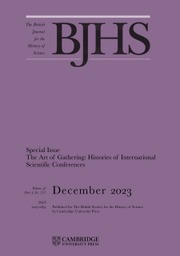It was pure coincidence. I was reading Greedy Science during a research stay in Baltimore, where I attended a book launch at an independent bookshop called Greedy Reads. The coincidence of encountering ‘greedy’ twice stayed with me, not because of the repetition itself, but because of the broader questions it evoked. As I looked around at the wide range of academic titles on the shelves of Greedy Reads, I found myself wondering how many of these books might never be written in the years to come. It was mid-March 2025, and universities across the United States were beginning to announce significant financial cuts. At my host institution, Johns Hopkins University, an $800 million loss in USAID grants had just been confirmed, with severe consequences for its health research and medical schools.
Whereas Greedy Science examines how scientists and scientific communities in the 1980s were driven by personal gain and the pursuit of fame (thus greed in its more traditional sense), the situation today appears strangely reversed. Rather than scientists being accused of excess, it is now policymakers and institutions who appear greedy in a different way: reluctant to invest in knowledge production, protective of shrinking budgets and distrustful of scientific expertise. One wonders whether future historians will look back at the present moment as a time not of excess, but of scarcity, in which the value of science was heavily doubted and contested. This invites reflection on how we relate to scientific authority today, particularly in contrast to earlier periods such as the postwar decades, when there was broad governmental trust in big science, or the late 1960s, when radical critiques emerged in response to the entanglement of science and the military.
Greedy Science, a follow-up to Groovy Science, which McCray co-edited with David Kaiser (2016) and which examined how members of the counterculture appropriated technoscience in the 1970s, helps to bridge historical moments, addressing a significant gap in our understanding of the cultural and institutional shifts that reshaped science during the long 1980s. Comprising thirteen diverse and engaging case studies, Greedy Science is introduced by the editors, who situate developments in science within broader political, economic and cultural transformations. The collection concludes with a striking afterword by David Farber, which reflects on crack cooking as a form of people’s science: a grass-roots approach to chemistry, fortune seeking and illegal business.
The thirteen essays demonstrate that the 1980s was a decade shaped by the logic of privatization, deregulation and entrepreneurialism, and science did not stand apart from these currents. Instead, it was actively reconfigured. Scientists began to take on new public roles and explore market opportunities; they became entrepreneurs, media personalities and, at times, even celebrities. Scientists were no longer confined to academic institutions and government laboratories. They launched start-ups and contributed to branding campaigns. The collection shows how the pursuit of profit and prestige brought new ethical dilemmas, and how the boundaries between scientific inquiry and commercial interest became blurred.
What makes the volume particularly compelling is its refusal to offer simplistic moral judgements. Although the title hints at critique, the essays present a more layered picture. Greed was a powerful motivating force, which spurred innovation, intensified competition and heightened the visibility of science in the public sphere. By exploring these dynamics, Greedy Science invites readers to reflect on how scientific ambition and economic aspiration became deeply intertwined. Rather than condemning or celebrating this transformation, the volume opens a space for engagement with the consequences of this shift.
The case studies in Greedy Science are wide-ranging, covering topics such as early investments by oil companies in alternative energy, the emergence of personal computing, public science writing, Thatcher-era science policy, AIDS activism, Texas’s strategic science planning, the Soviet reaction to Reagan’s Strategic Defense Initiative, scientific infrastructure development in Singapore and the personalization of robotics in Japan. The contributors also examine the rise of biotechnology and the competition for patents. Several chapters underscore how science became increasingly shaped by neoliberal economic policies, with research agendas driven more by market logic than by traditional academic values. One might ask whether the book’s emphasis on technology makes the narrative of ‘greed’ more readily apparent here than it would be in fields of conventional basic science.
Not all contributors use the concept of greed in the same way. Some engage with it directly and in depth, whereas others focus on broader shifts. This variation gives the collection a certain unevenness, but also makes it intellectually rich. Rather than offering a singular narrative, the book opens up multiple avenues for exploring the science–capitalism–culture nexus. At times the collection reads more as an invitation to further research than as a definitive interpretation of the decade. Yet this is arguably one of its greatest strengths. Greedy Science does not offer all the answers, but it raises timely and relevant questions.
Although primarily focused on the United States, the book speaks to a broader international audience. It will be of great interest to historians of science, cultural historians, scholars of innovation, readers intrigued by the moral transformations of science and anyone curious about how we moved from the Cold War scientist in a white lab coat to the tech founder delivering keynote speeches across the globe. Greedy Science shows how the 1980s redefined the role of the scientist, laying the groundwork for today’s complex mix of public scepticism and entrepreneurialism. More than a retrospective, it holds up a mirror to the present and prompts us to consider how much has changed – and at what cost.


